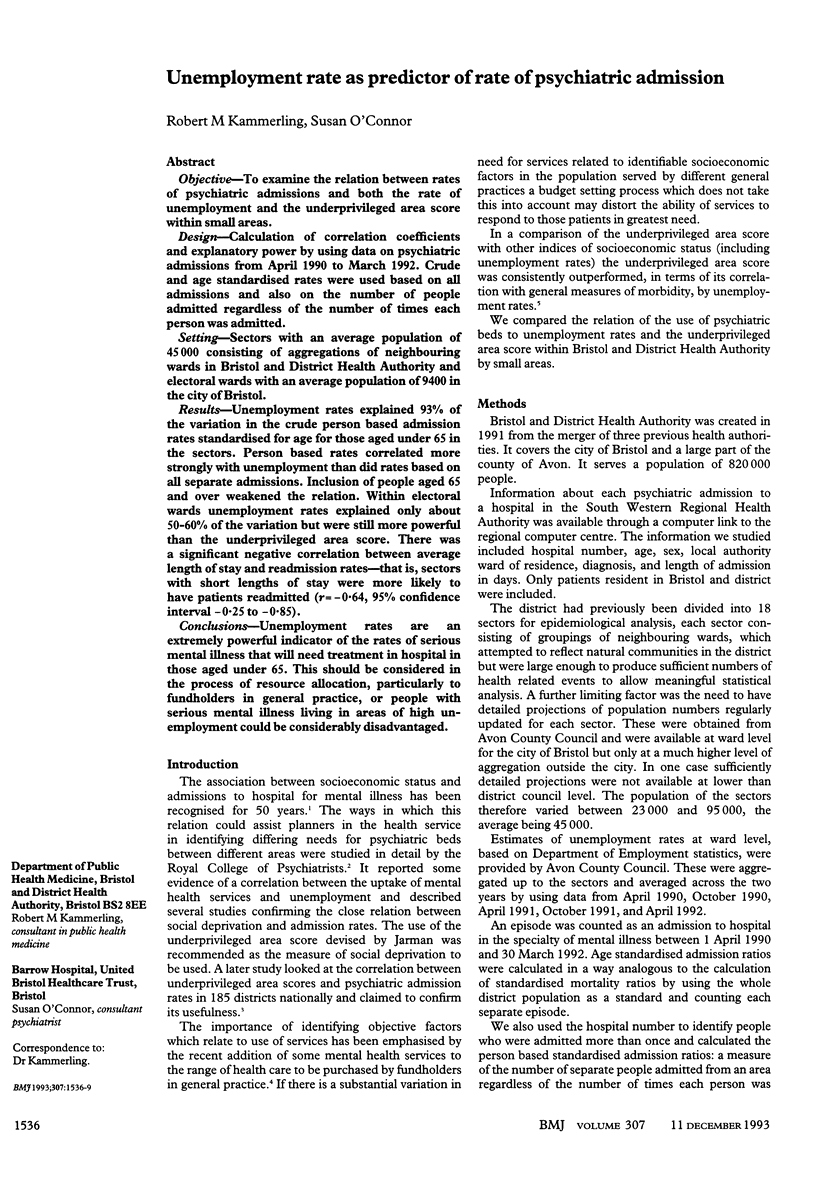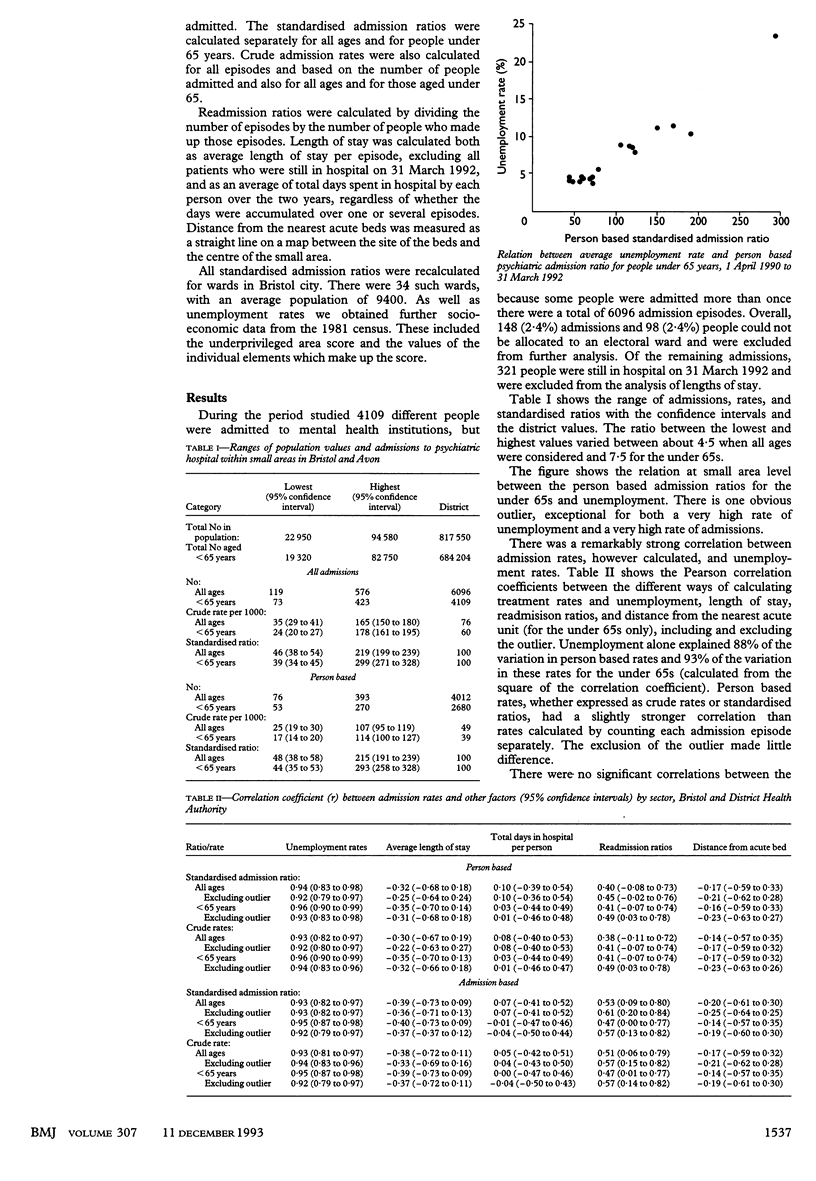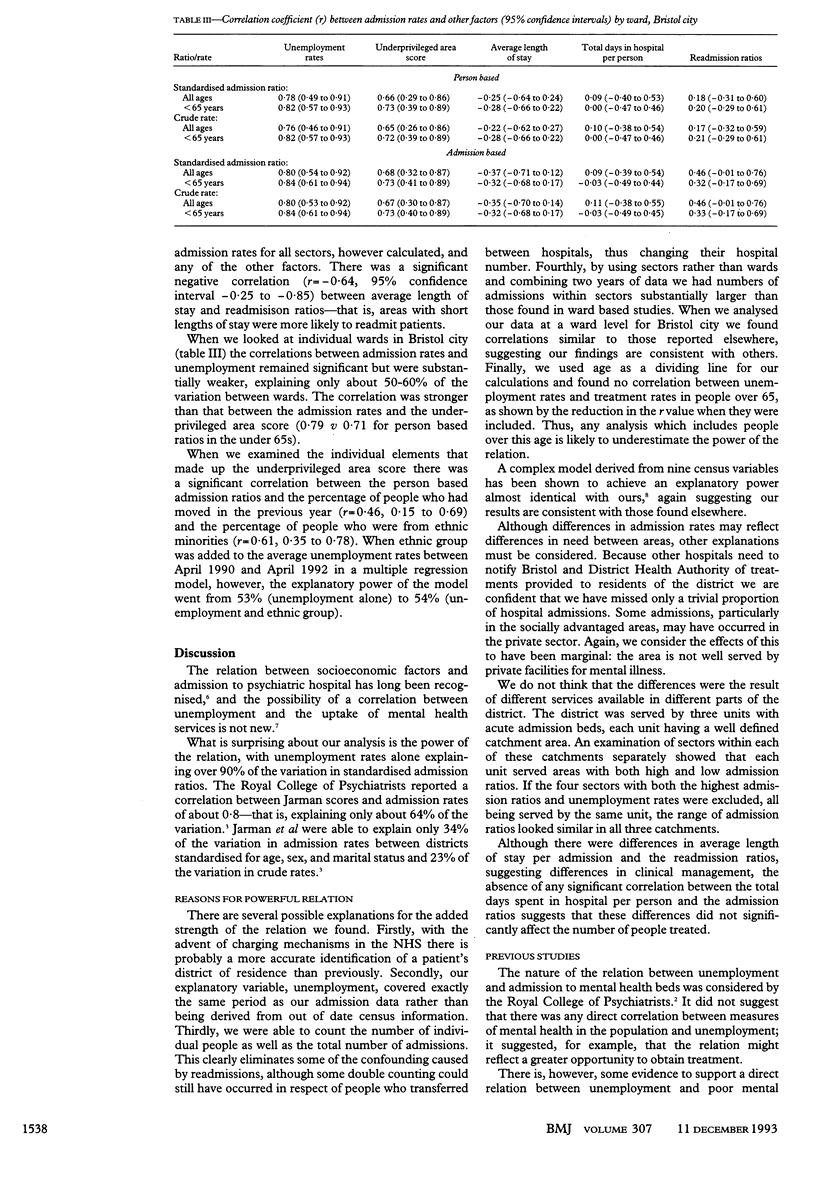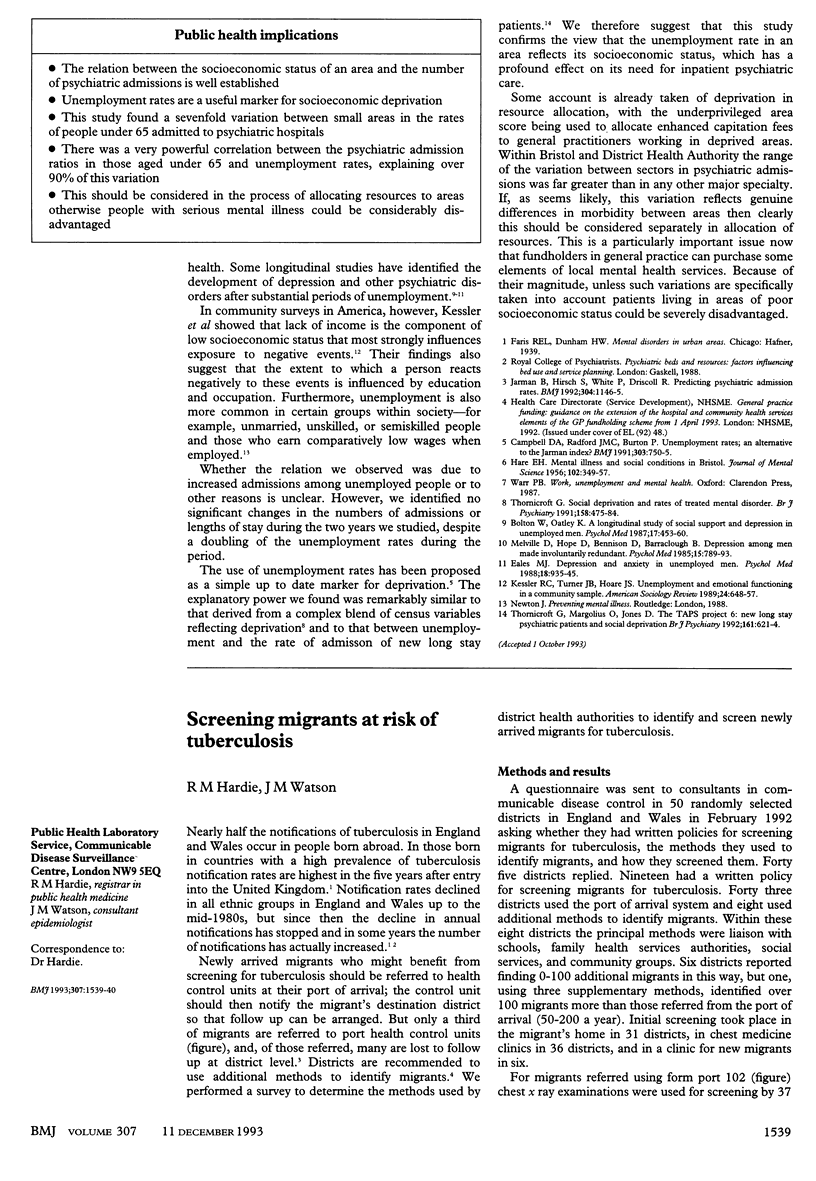Abstract
OBJECTIVE--To examine the relation between rates of psychiatric admissions and both the rate of unemployment and the underprivileged area score within small areas. DESIGN--Calculation of correlation coefficients and explanatory power by using data on psychiatric admissions from April 1990 to March 1992. Crude and age standardised rates were used based on all admissions and also on the number of people admitted regardless of the number of times each person was admitted. SETTING--Sectors with an average population of 45,000 consisting of aggregations of neighbouring wards in Bristol and District Health Authority and electoral wards with an average population of 9400 in the city of Bristol. RESULTS--Unemployment rates explained 93% of the variation in the crude person based admission rates standardised for age for those aged under 65 in the sectors. Person based rates correlated more strongly with unemployment than did rates based on all separate admissions. Inclusion of people aged 65 and over weakened the relation. Within electoral wards unemployment rates explained only about 50-60% of the variation but were still more powerful than the underprivileged area score. There was a significant negative correlation between average length of stay and readmission rates--that is, sectors with short lengths of stay were more likely to have patients readmitted (r = -0.64, 95% confidence interval -0.25 to -0.85). CONCLUSIONS--Unemployment rates are an extremely powerful indicator of the rates of serious mental illness that will need treatment in hospital in those aged under 65. This should be considered in the process of resource allocation, particularly to fundholders in general practice, or people with serious mental illness living in areas of high unemployment could be considerably disadvantaged.
Full text
PDF



Selected References
These references are in PubMed. This may not be the complete list of references from this article.
- Bolton W., Oatley K. A longitudinal study of social support and depression in unemployed men. Psychol Med. 1987 May;17(2):453–460. doi: 10.1017/s0033291700025010. [DOI] [PubMed] [Google Scholar]
- Campbell D. A., Radford J. M., Burton P. Unemployment rates: an alternative to the Jarman index? BMJ. 1991 Sep 28;303(6805):750–755. doi: 10.1136/bmj.303.6805.750. [DOI] [PMC free article] [PubMed] [Google Scholar]
- Costello A. M., Bhutta T. I. Antidiarrhoeal drugs for acute diarrhoea in children. BMJ. 1992 Jan 4;304(6818):1–2. doi: 10.1136/bmj.304.6818.1. [DOI] [PMC free article] [PubMed] [Google Scholar]
- Eales M. J. Depression and anxiety in unemployed men. Psychol Med. 1988 Nov;18(4):935–945. doi: 10.1017/s0033291700009867. [DOI] [PubMed] [Google Scholar]
- HARE E. H. Mental illness and social conditions in Bristol. J Ment Sci. 1956 Apr;102(427):349–357. doi: 10.1192/bjp.102.427.349. [DOI] [PubMed] [Google Scholar]
- Melville D. I., Hope D., Bennison D., Barraclough B. Depression among men made involuntarily redundant. Psychol Med. 1985 Nov;15(4):789–793. doi: 10.1017/s0033291700005018. [DOI] [PubMed] [Google Scholar]
- Thornicroft G., Margolius O., Jones D. The TAPS project. 6: New long-stay psychiatric patients and social deprivation. Br J Psychiatry. 1992 Nov;161:621–624. doi: 10.1192/bjp.161.5.621. [DOI] [PubMed] [Google Scholar]


